For centuries images of The Last Judgment were commonplace – particularly on church walls and in paintings. This is a typical example by Fra Angelico which is thought to have been painted between 1435 and 1440 …
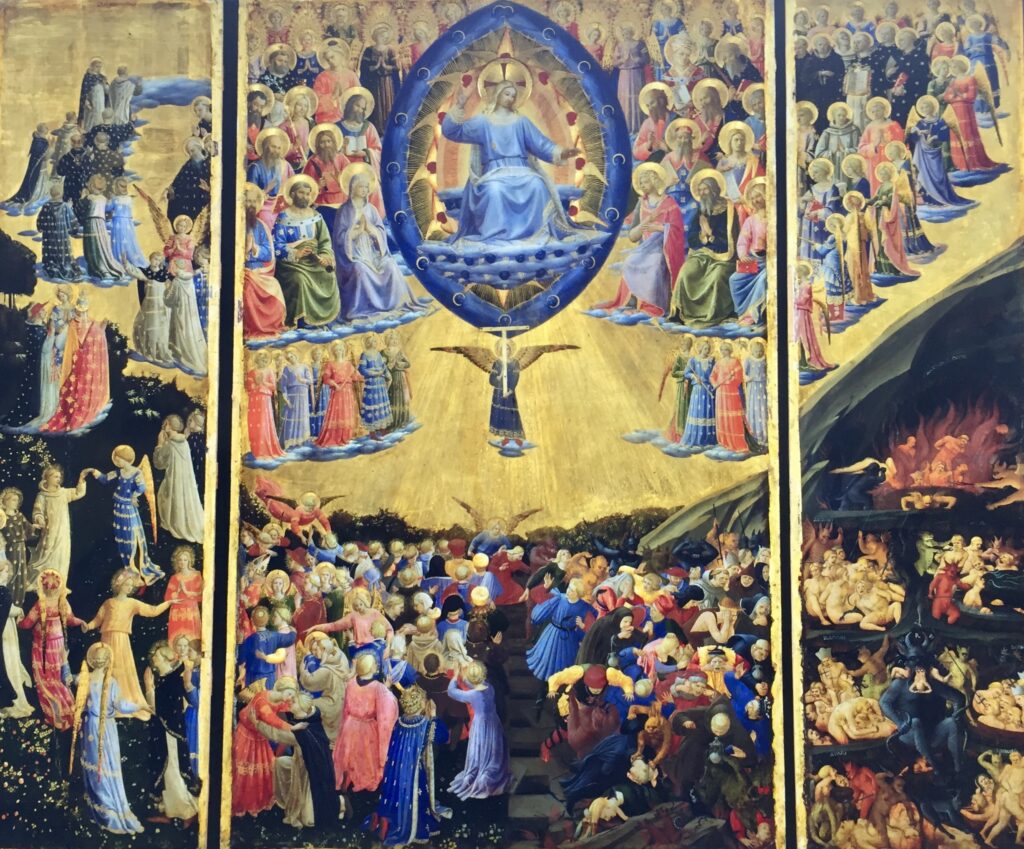
Jesus sits enthroned in glory calling up the dead for judgment. He is surrounded by Saints and Apostles, his right hand pointing towards Heaven and his left to Hell. On one side people wearing their everyday clothes are led up to Heaven by winged angels …
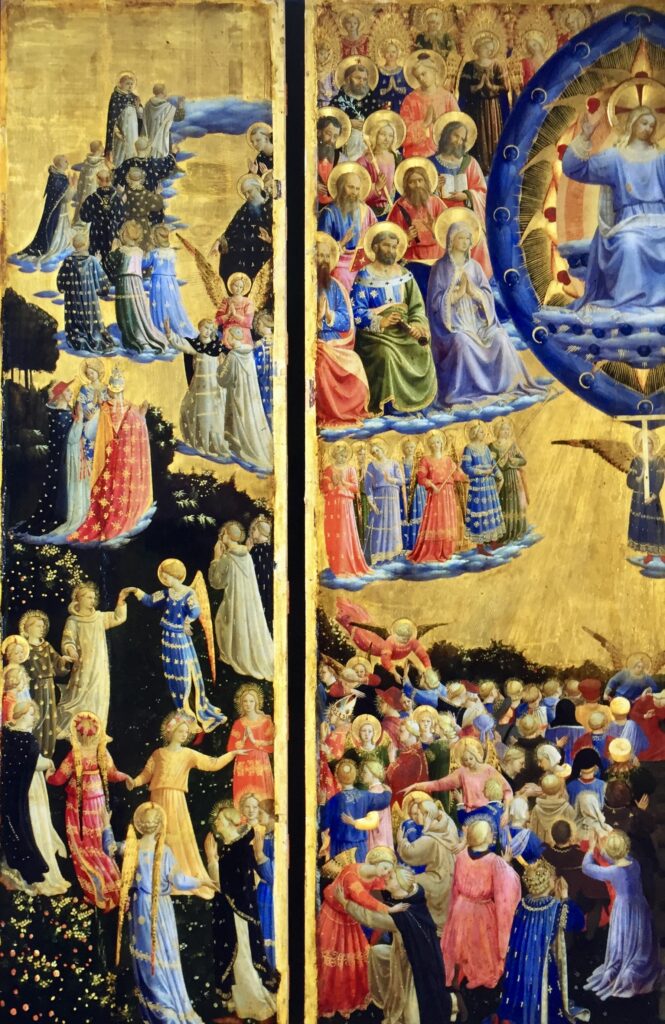
But things are a bit grim on the bottom right. Demons prod and drag the condemned off to Hell where a horned Satan supervises a variety of terrible punishments. Look closely at the damned and you’ll see at least two monks and a bishop wearing a mitre …
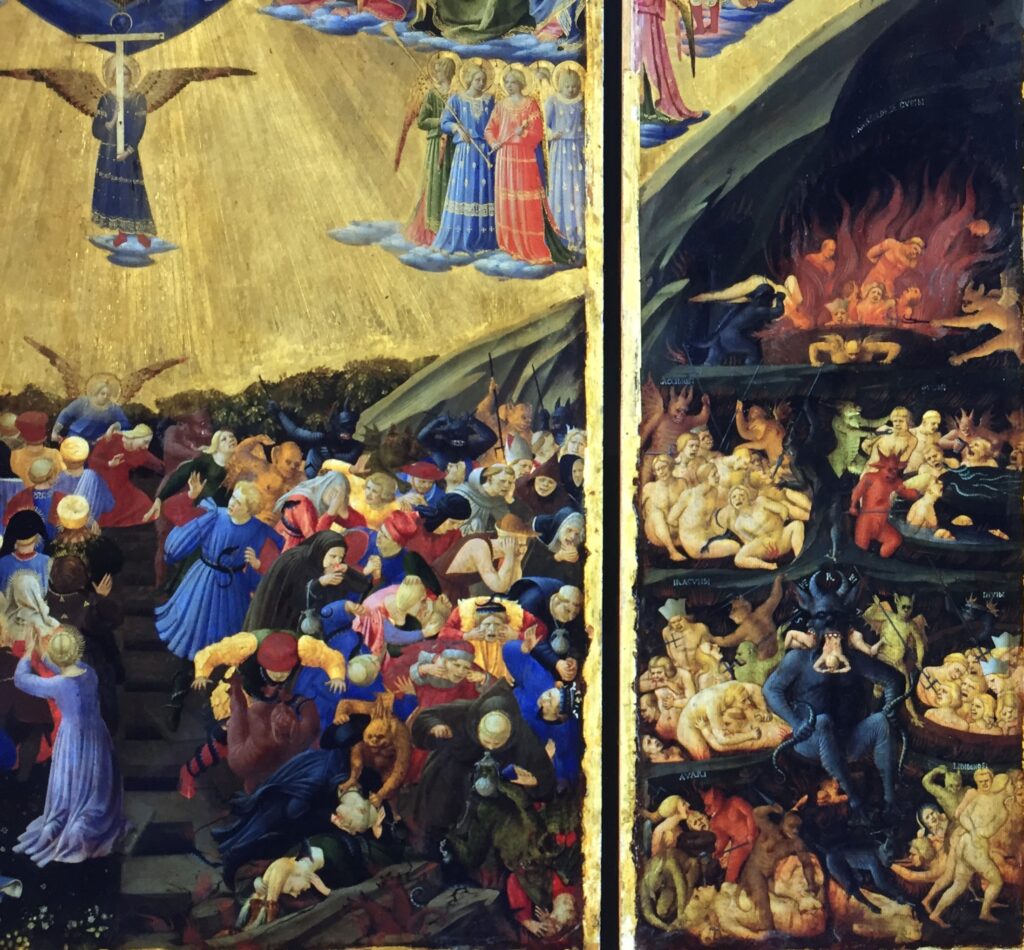
The depictions of the Last Judgment I am going to write about are carved in stone and differ from the Fra Angelico composition in a number of ways. The first is in the narthex of St Mary-at-Hill on Lovat Lane (EC3R 8EE) …
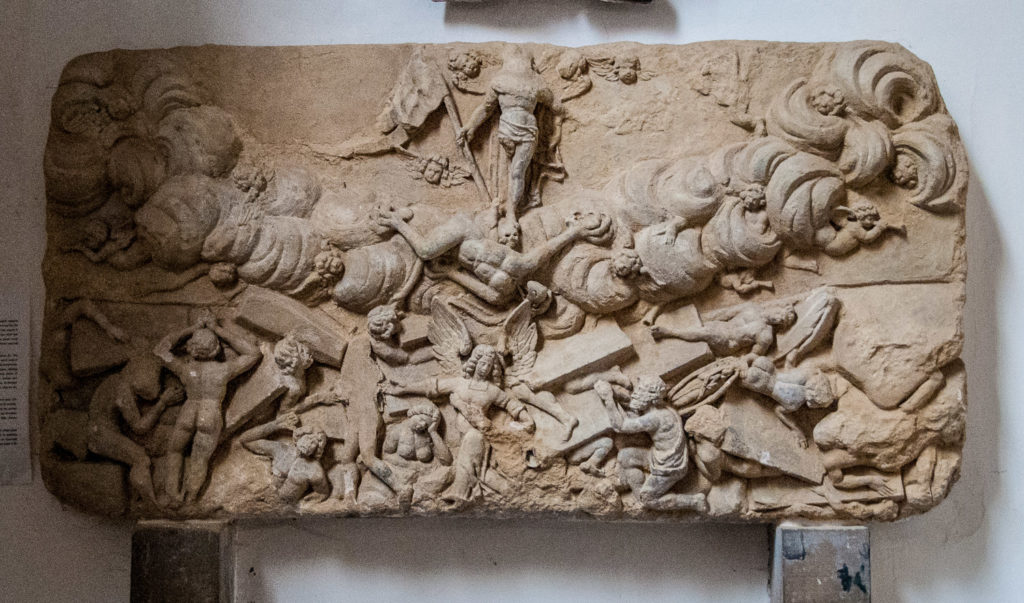
It most likely dates from the 1670s. Its carver is unknown, but it is known that the prominent City mason Joshua Marshall was responsible for the rebuilding of the church in 1670-74 and his workshop may have produced the relief. Exactly where it was originally positioned is uncertain; most likely it stood over the entrance to the parish burial ground and was brought inside more recently.
In close up …
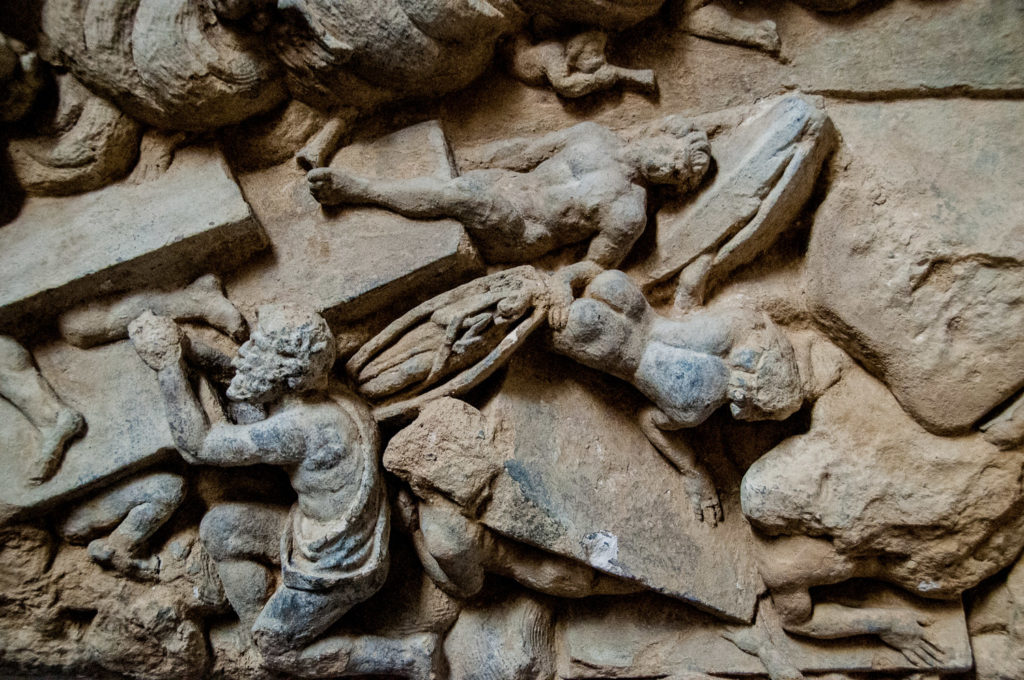
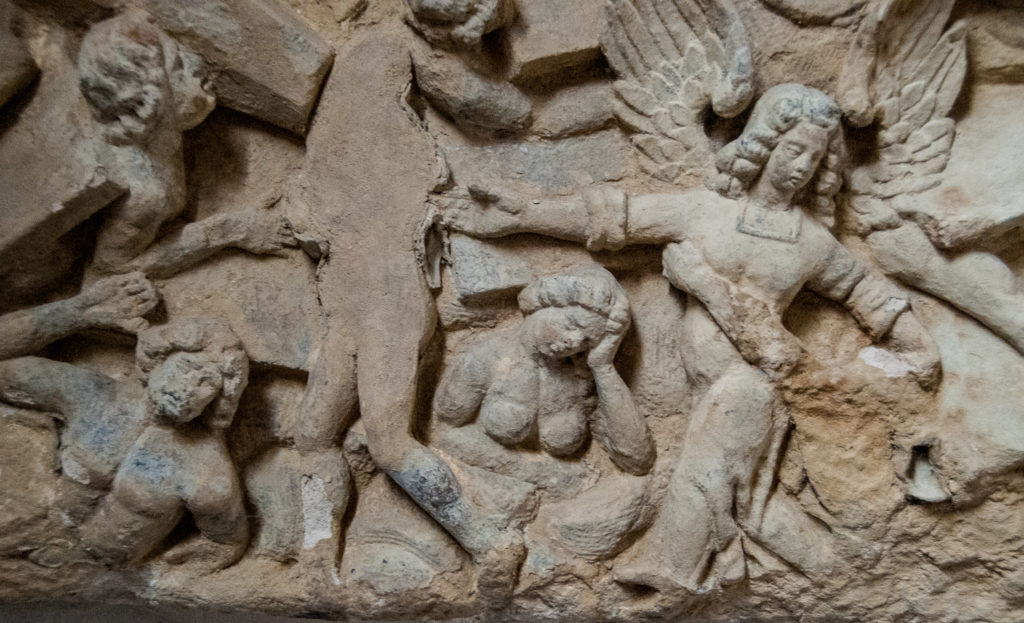
The main difference here from the traditional representations is the absence of Hell, so it’s a more optimistic portrayal. Also, people appear naked or just wrapped in a shroud rather than being differentiated by their clothing. Perhaps this signifies everyone is equal when the last judgment comes.
The second stone is just visible from Holborn Viaduct if you look down the steps of the church of St Andrew Holborn (EC4A 3AF) …
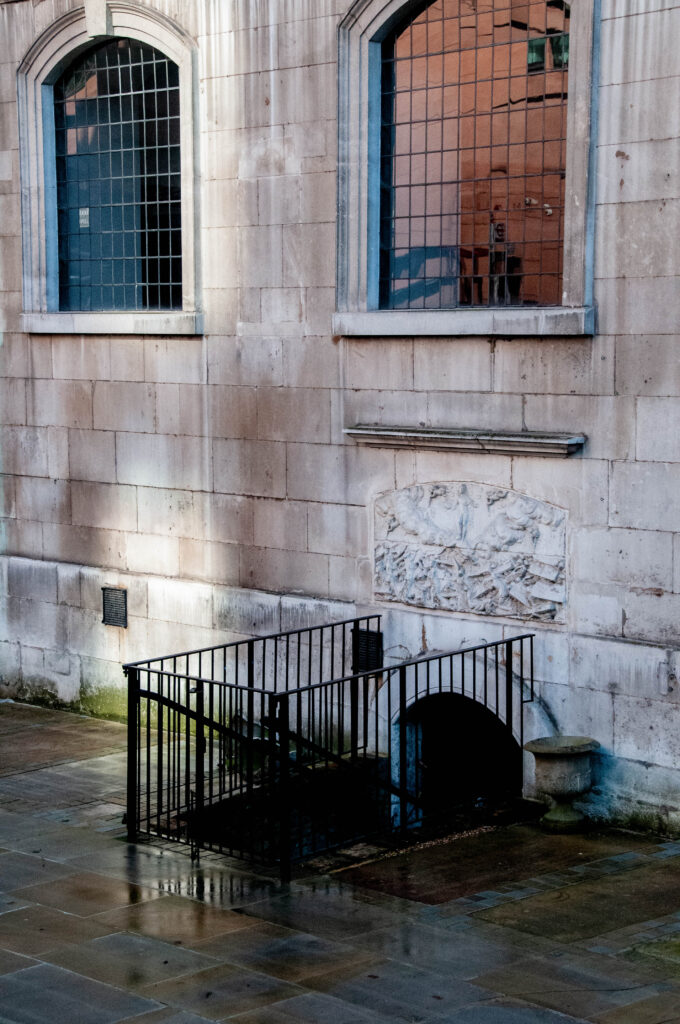
Although a bit more weather-beaten that the St Mary-at-Hill version, the figure of Christ’s head has not been damaged and he gazes serenely down as angels sound trumpets to summon the dead. He’s surrounded by little winged figures or putti …
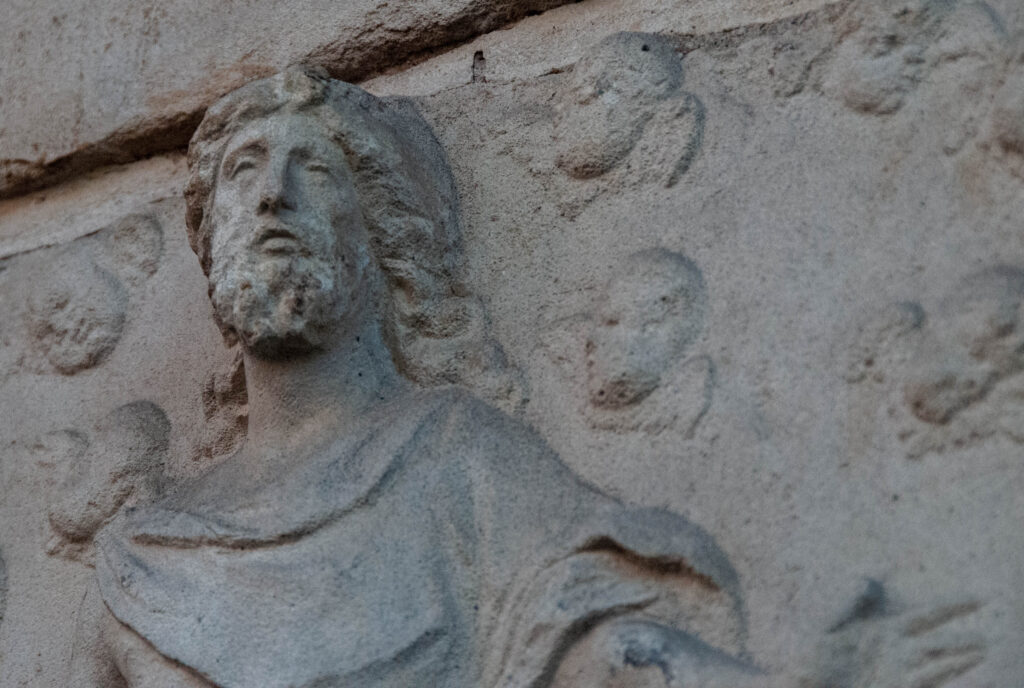
Open coffins lie amongst the chaos as the angels do their work. Under his feet Christ is crushing a dragon-like creature with a long tail, again probably representing Satan …
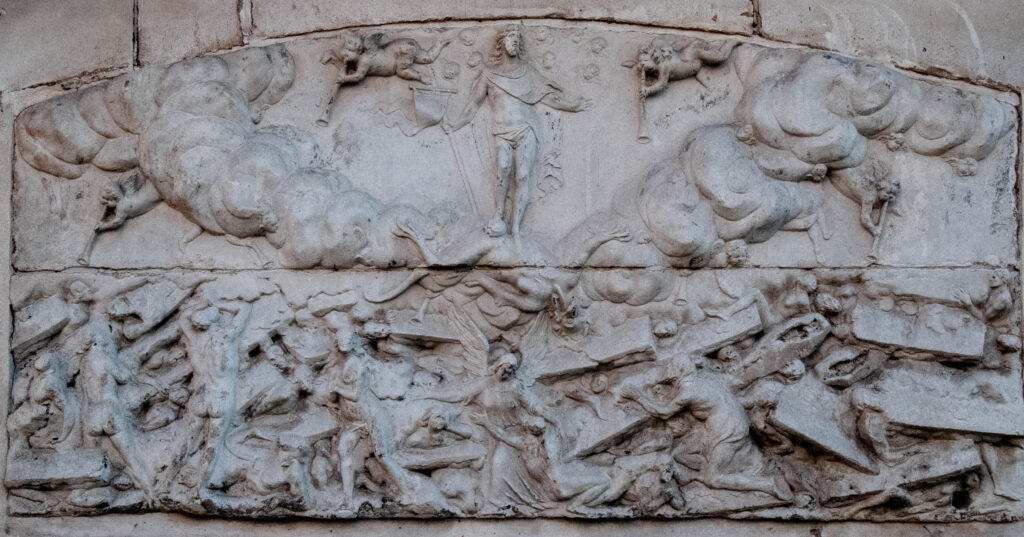
People emerge, crawling towards the light …
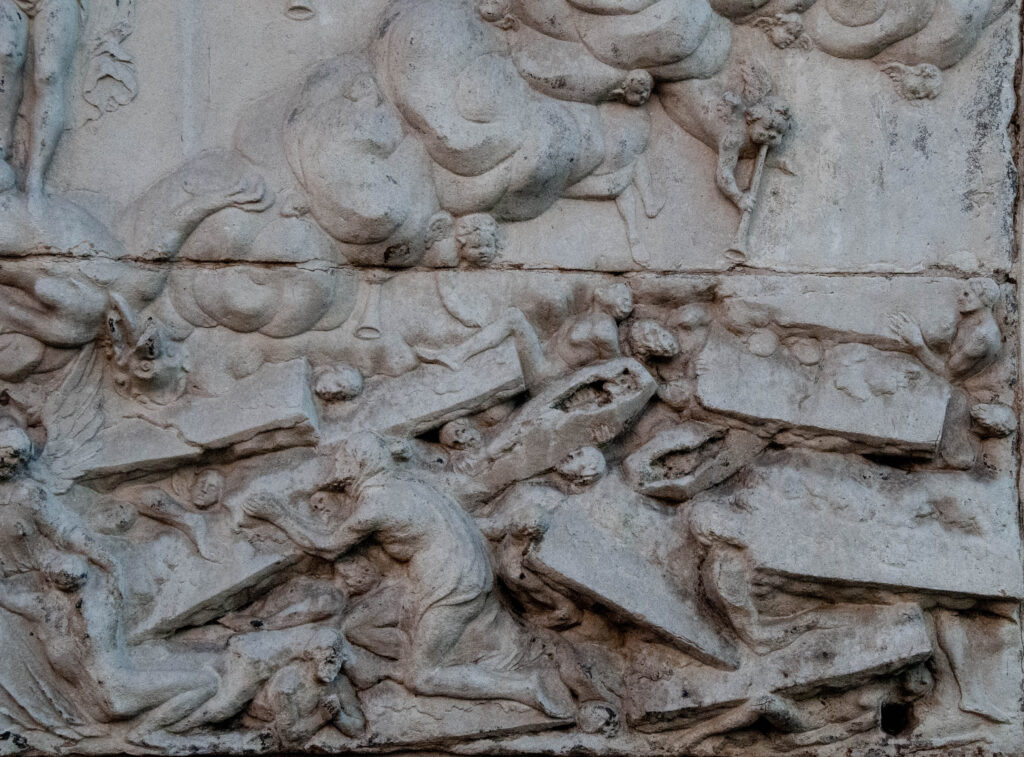
One of the figures here is clinging to an angel and another holds his hands in prayer or supplication …
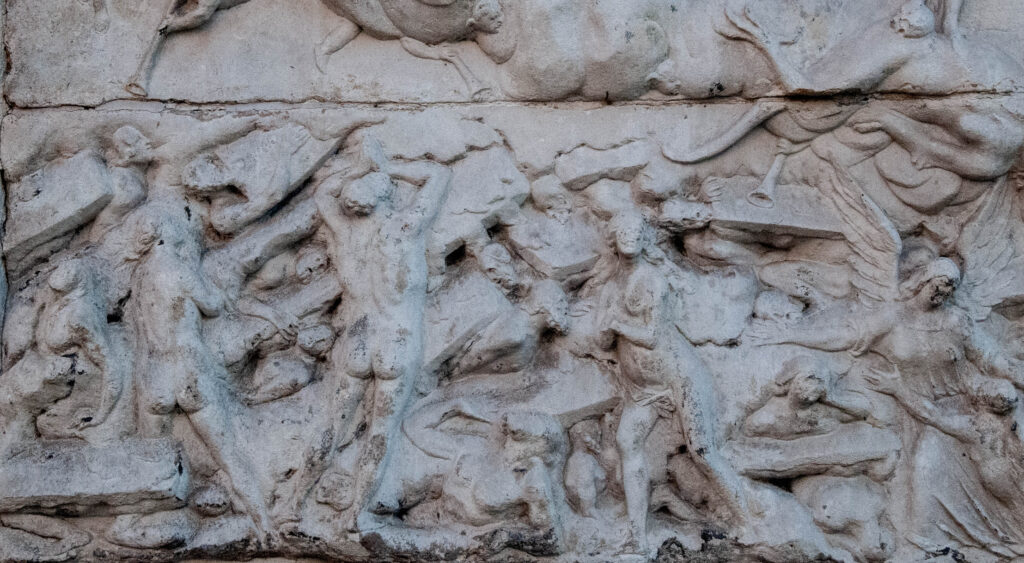
Once again, apart from Christ and the angels, everyone is naked and there is no representation of Hell. The stone once stood over the paupers’ cemetery in Shoe Lane and was maybe intended to give some succour and hope to those attending the burial of loved ones. It’s thought that this stone also dates from the 1670s but again the carver is unknown.
I am tempted to assume that, after the horrors of the plague of 1665 and the Great Fire of 1666, portrayals of the resurrection were represented more positively by removing threats of Hell and damnation.
I’m always looking out for great London blogs and my publication this week was inspired by the Flickering Lamps blogger Caroline who has written on the same subject. Click here for a link to her website.
By way of light relief in our own difficult times, if you have the chance check out the Herd of Hope elephants at Spitalfields Market …
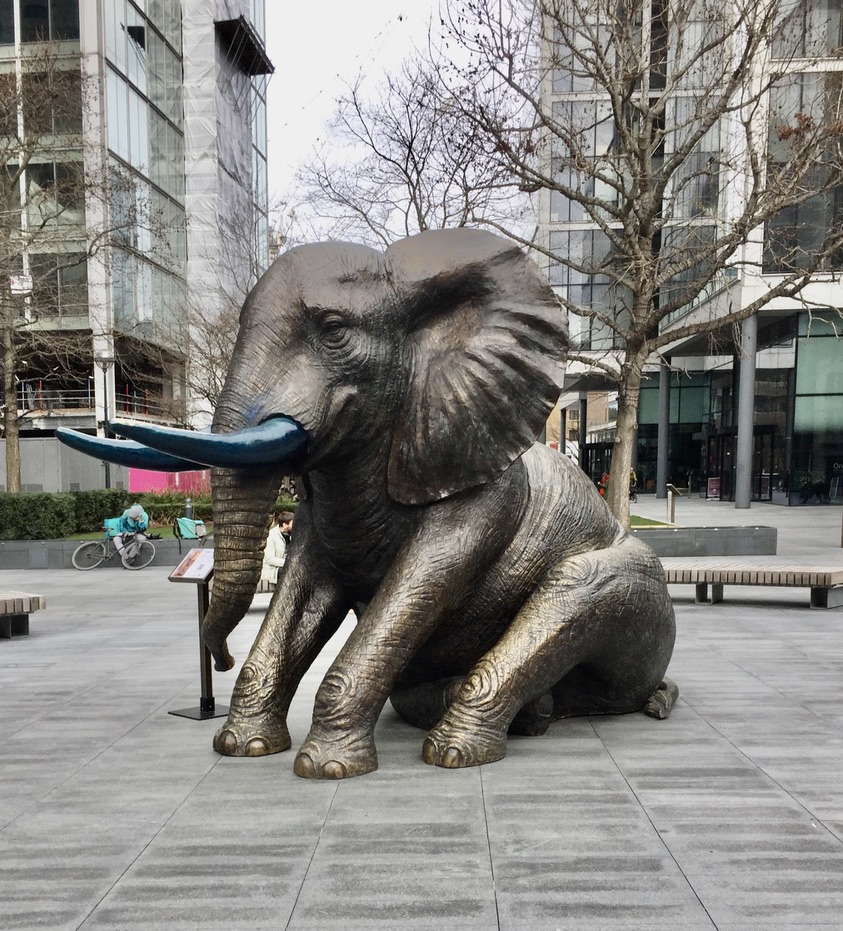

If you would like to follow me on Instagram here is the link …
